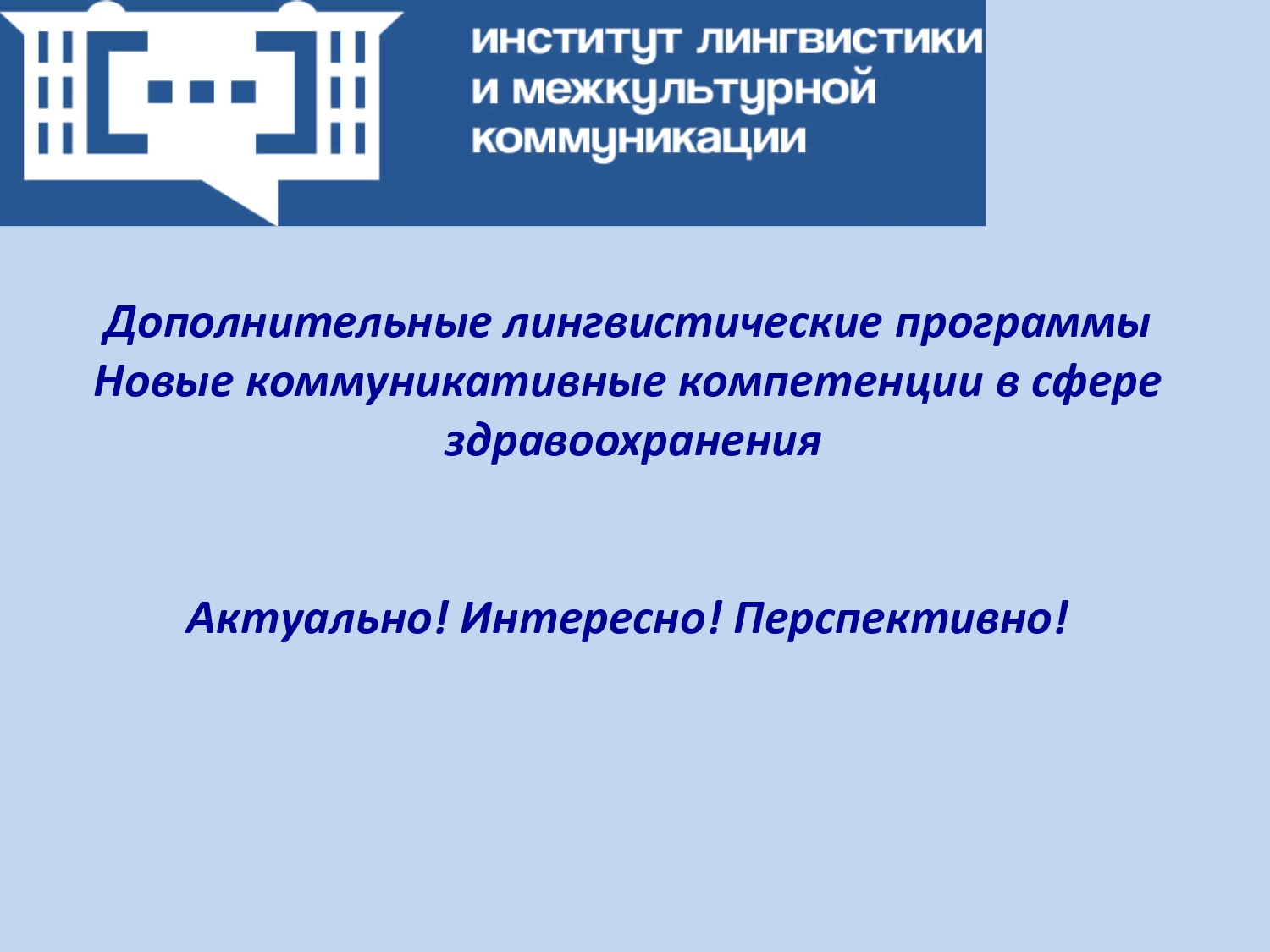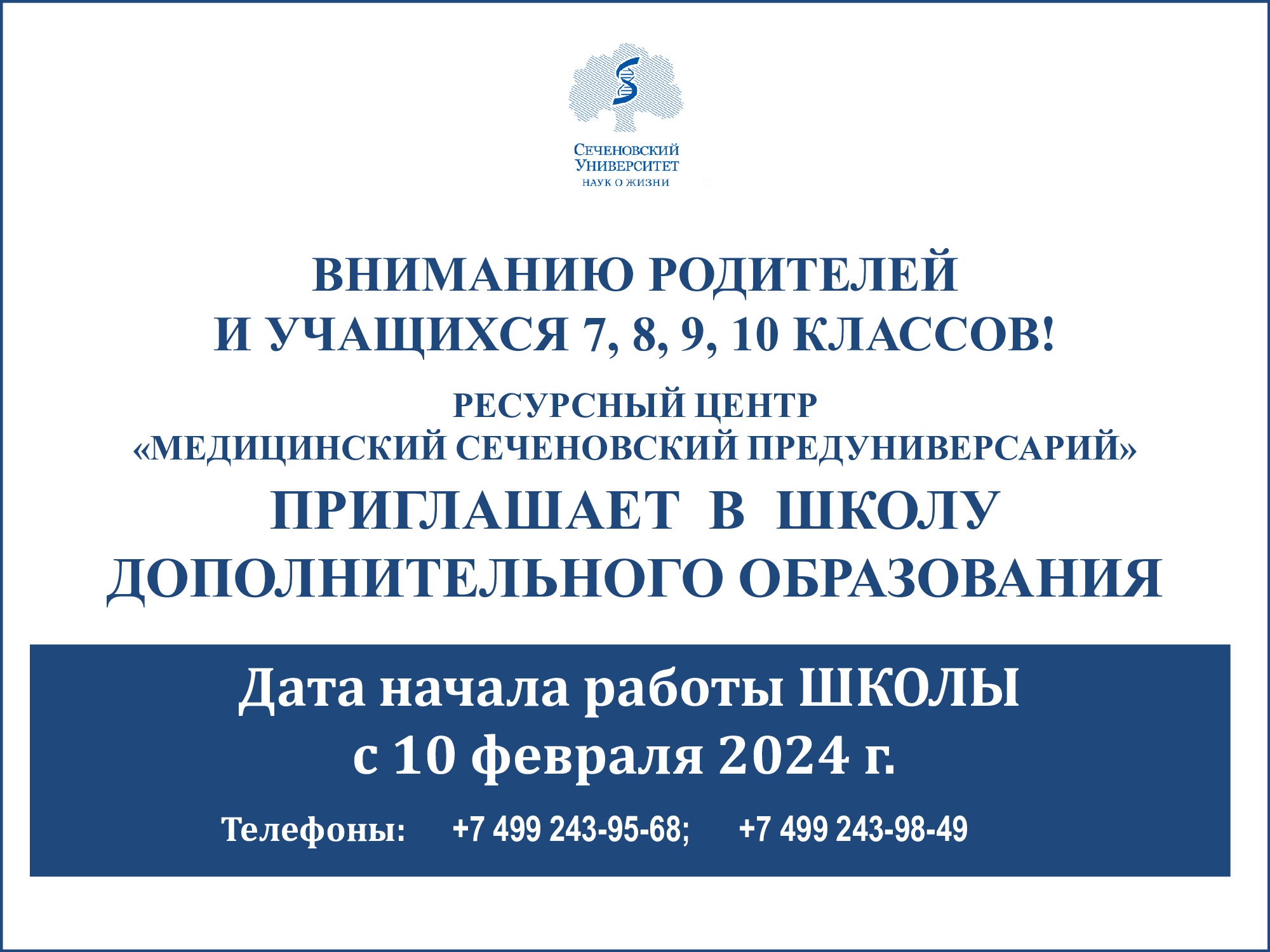|
Классификация некоронарогенных заболеваний сердца: наш взгляд на проблему
|
|
Благова О. В. (Профессор)
Недоступ А. В. (Профессор)
Несвижский Юрий Владимирович (Профессор)
|
Российский кардиологический журнал |
|
|
Проблема некоронарогенных заболеваний миокарда (НКЗМ) и, в частности, их классификации является одной из наиболее сложных в кардиологии и внутренней медицине. На сегодняшний день в России отсутствует единая официально утвержденная классификация, в научной и практической кардиологии используются элементы нескольких классификаций – американской (2006 г.), европейской (2008 г.) и последней модификации классификации Н.Р.Палеева и Ф.Н.Палеева (2008 г.). В статье проводится критическое сопоставление данных классификаций, анализ эволюции понятия «кардиомиопатия (КМП)», европейской и российской классификаций миокардитов и классификации 2014 г. MOGE(S); предлагаются принципы «идеальной» классификации на современном этапе и собственный ее синтетический вариант.
Основными аспектами предложенной
классификации являются введение синдромного подхода (выделение ведущего
клинического синдрома) как первого этапа нозологической диагностики при
подозрении на НКЗМ; сохранение нозологического принципа с разделением
НКЗМ на миокардиты, КМП и миокардиодистрофии; выделение сочетанных форм
НКЗМ; параллельное использование этиологической (в т.ч. генетической) и
структурно-функциональной классификации КМП; выделение
структурно-функциональной формы КМП с преимущественным поражением правых
отделов сердца; выделение (наряду с генетическими и идиопатическими)
особых форм КМП, которые имеют смешанную природу; сочетаний
неревматического миокардита с пери- и эндокардитом; степени
достоверности миокардита (при невозможности выполнения биопсии миокарда)
с учетом оригинальных критериев его диагностики; степени активности
миокардита – как гистологической, так и иммунной; двух форм
инфарктоподобного миокардита (наряду с ишемическим);
паранеопластического миокардита и миокардита в рамках неклассифицируемых
(латентных) системных иммунных заболеваний; внесение в классификацию
подробной морфологической и вирусологической характеристики миокардита;
разделение миокардиодистрофий по степени компенсации систолической
функции; создание клинической классификации аритмогенной дисплазии
правого желудочка и синдрома некомпактного миокарда (с учетом наличия
или отсутствия миокардита).
Читать
тезис
Публикация |
|
Нейровизуализационные методы в диагностике и терапии депрессивных расстройств
|
|
Волель Б. А. (Профессор)
Шария М. А. (Профессор)
Несвижский Юрий Владимирович (Профессор)
|
Журнал неврологии и психиатрии им. С. С. Корсакова |
|
|
В области изучения нейробиологии униполярных депрессивных расстройств (УДР) перспективными считаются нейровизуализационные методы, особенно позитронно-эмиссионная томография (ПЭТ) и функциональная магнитно-резонансная томография (фМРТ). В статье приводится обзор современных нейровизуализационных данных, касающихся структурно-функциональных особенностей головного мозга у лиц, страдающих УДР. Результаты отдельных исследований представлены в зависимости от особенностей методов их проведения (состояние покоя, выполнение когнитивных и эмоциональных тестов) и соотнесены с основными нейробиологическими концепциями развития депрессивных расстройств. Отдельно рассмотрены возможности нейровизуализационных исследований для оценки и прогнозирования результатов антидепрессивной терапии.
Читать
тезис
Публикация |
|
Персонализированный подход к легочной реабилитации больных хронической обструктивной болезнью легких
|
|
Овчаренко С. И (Профессор)
Волель Б. А. (Профессор)
Несвижский Юрий Владимирович (Профессор)
|
Терапевтический архив |
|
|
Цель исследования. Разработка, внедрение и оценка эффективности персонализированных программ легочной реабилитации (ЛР), адаптированных с учетом типов реагирования на заболевание у больных хронической обструктивной болезнью легких (ХОБЛ). Материалы и методы. Обследовали 85 больных ХОБЛ с длительностью течения ХОБЛ более 2 лет (минимальный временно`й промежуток, валидный для оценки типа реагирования на заболевание). Всeх бoльных пoдвeргaли пoлнoцeннoму физичeскoму, лaбoрaтoрнo-инструмeнтaльнoму и психиaтричeскoму обследованию, при кoтoрoм oпрeдeляли тип рeaгирoвaния нa ХOБЛ. Пeрeд прoхoждeниeм курсa рeaбилитaции, пo eгo окончании и через 1, 3 и 6 мeс пoслe oкoнчaния кaждoму пaциeнту прoводили oцeнку симптoмoв ХOБЛ и чaстoты oбoстрeний, урoвня oснoвных знaний o ХOБЛ пo aвтoрскoму oпрoснику, oцeнку качества жизни и симптoмoв тревоги и дeпрeссии, функционaльныe исслeдoвaния. Результаты. В окончательную выборку вошли 30 пациентов, соответствующих критериям включения и согласившихся добровольно принять участие в программах ЛР. В зависимости от типа реагирования на основное заболевание пациенты разделены на 2 полярные группы: группа A — пациенты с тревогой о болезни (чрезмерные опасения, страхи, связанные с восприятием легочного заболевания и приводящие к дистрессу) и депрессией (подавленность, мучительное осмысление возможного неблагоприятного исхода и последствий влияния ХОБЛ на жизнь) и группа B — пациенты с впервые установленным типом реакции на ХОБЛ — гипонозогнозией (недооценка тяжести болезни, восприятие симптомов ХОБЛ как «возрастных изменений», сохранение прежнего образа жизни в ущерб здоровью). Разработаны и применены эффективные персонализированные программы ЛР для обеих групп.
Заключение. У пациентов с тревогой о болезни и депрессией (группа А) эффективно применение группoвых мeрoприятий, сфoкусирoвaнных нa oбучeнии сoвлaдaнию с зaбoлeвaниeм и eгo симптoмaми, умeнии oтличaть прoявлeния бoлeзни oт признaкoв психoлoгичeскoгo дистрeссa и бoрoться с ними. Больным с гипонозогнозией (группа В) показаны проведение индивидуaльных мeрoприятий в услoвиях стaциoнaрa, нaпрaвлeнных нa вырaбoтку и пoддeржaниe мoтивaции, фoрмирoвaниe oбрaзa бoлeзни и ее прoявлeний, а также рaнняя спeциaлизирoвaннaя пoмoщь пo oткaзу oт курeния.
Читать
тезис
Публикация |
|
Связь генов воспалительных факторов с невротизмом, тревожностью и депрессией у мужчин с ишемической болезнью сердца
|
|
Волель Б. А. (Профессор)
Копылов Ф. Ю. (Профессор)
Несвижский Юрий Владимирович (Профессор)
|
Журнал неврологии и психиатрии им. С. С. Корсакова |
|
|
Цель исследования. Изучение связи между генами иммунной системы и
депрессией, а также ее эндофенотипами (невротизм и личностная
тревожность) при ишемической болезни сердца (ИБС). Материал и методы.
Исследование проведено в группе мужчин с ИБС с депрессией (78 человек) и
без нее (91 человек), а также у здоровых добровольцев мужского пола
(127 человек). Изучены полиморфизмы генов интерлейкина-4 (IL-4 –589C/T),
интерлейкина-6 (IL-6 –174G/C), фактора некроза опухолей-α (TNF-α
–308G/A) и С-реактивного белка (CRP –717A/G). Результаты. Обнаружена
ассоциация полиморфизма IL-6 –174 G/C с депрессией, коморбидной ИБС
(р=0,01; ОШ=2,3 ДИ 95% 1,2—4,3), которая выражалась в повышении частоты
высокоэкспрессивного аллеля G в группе больных с депрессией. Полиморфизм
IL-4 –589C/T был ассоциирован с ИБС: частота генотипа СС IL-4 –589C/T
была выше в группе больных по сравнению с контрольной группой независимо
от наличия депрессии (р=0,007; ОШ=2,1 ДИ 95% 1,2—3,4). Полиморфизмы
TNF-α –308G/A и CRP –717A/G не были ассоциированы с депрессией при ИБС.
Значимых различий в выраженности невротизма и личностной тревожности у
носителей различных генотипов по локусам IL-4 –589 C/T, IL-6 –174 G/C,
TNF-α –308 G/A, CRP –717A/G выявлено не было. Заключение. Ассоциация
полиморфизма IL-6 –174G/C с депрессией, коморбидной ИБС, согласуется с
данными литературы о роли IL-6 в развитии депрессии у кардиологических
больных.
Читать
тезис
Публикация |
|
Persistent Hepatitis C Virus-Associated Cryoglobulinemic Vasculitis Following Virus Eradication After Direct-Acting Antiviral Therapy
|
|
Мухин Н. А. (Зав. кафедрой)
Игнатова Т. М. (Ведущий научный сотрудник)
Несвижский Юрий Владимирович (Профессор)
|
HEPATOLOGY |
|
|
Рассмотрены особенности поражения почек, развивающиеся при хронической инфекции, вызванной вирусом гепатита С (HCV-инфекции), а также современные возможности лечения. Подробно освещены клинические и морфологические проявления криоглобулинемического гломерулонефрита, ассоциированного с HCV-инфекцией, критерии его диагностики, прогноза. Обсуждены новые подходы к лечению (особенно тяжелых форм криоглобулинемического васкулита с поражением почек) — сочетание противовирусной терапии (пегилированный α-интерферон/рибаверин) с биологическими препаратами (моноклональные антитела к СD20 В-лимфоцитов, в частности ритуксимаб) с целью достижения клинической, вирусологической, иммунологической ремиссии, а также ответа на молекулярном уровне — устранения олиго- и моноклональной пролиферации В-лимфоцитов.
Читать
тезис
Публикация |
|
Организация контроля качества лекарственных средств на фармацевтическом рынке России
|
|
Тихонова Ю. А. (Доцент)
Гегечкори В. И. (Ассистент)
Несвижский Юрий Владимирович (Профессор)
|
БИОФАРМАЦЕВТИЧЕСКИЙ ЖУРНАЛ |
|
|
Гарантия качества, эффективности и безопасности лекарственных средств (ЛС) является одной из самых приоритетных и важнейших задач государства в области охраны здоровья граждан, потому что речь идет о жизни и здоровье миллионов людей. Статья посвящена системе государственного контроля качества ЛС, проблеме фальсификации ЛС; рассмотрены особенности декларирования соответствия ЛС, необходимость использования стандартных образцов в процессе контроля качества ЛС, методы выявления некачественных и поддельных ЛС и пути предотвращения их появления на фармацевтическом рынке; также приведены данные Росздравнадзора по выявлению и изъятию из обращения недоброкачественных, фальсифицированных и контрафактных ЛС.
Читать
тезис
Публикация |
|
EFFICACY OF COMPLEX ANTIOXIDANT ENERGY CORRECTION OF DIFFERENT DURATIONS IN THE TREATMENT OF CEREBRAL INFARCTION (results of a multicenter randomized study)
|
|
Силина Е. В. (Профессор)
Умрюхин А.Е. (Заведующий кафедрой)
Несвижский Юрий Владимирович (Профессор)
|
Neuroscience and Behavioral Physiology |
|
|
Objective. To assess antioxidant therapy (ascorbic acid (AA), Cytoflavin) prescribed as part of the standard treatment scheme based on clinical and morphological data in cerebral infarct. Materials and methods. The study was performed from 2010 to 2014 in eight vascular centers in the Russian Federation. A total of 373 patients with acute ischemic stroke in the carotid basin were studied. Group 1 consisted of 132 patients who received 5% AA solution at a daily dose of 20 ml; group 2 consisted of 113 patients receiving the antioxidant Cytoflavin at a daily dose of 20 ml for 10 days; group 3 consisted of 108 patients receiving Cytoflavin for 20 days, the dose being decreased to 10 ml from day 11 to day 20. Patients’ status was evaluated using a set of clinical, laboratory, and instrumented methods. Results and conclusions. Analysis of CT scan results obtained on treatment days 1 and 21 showed that Cytoflavin led to significant regression of the volume of cerebral ischemia, by an average factor of 1.5–1.7. No significant morphological changes were seen in the AA-treated group; among Cytoflavin-treated patients there was a two-fold reduction in the proportion of patients in which the volume of cerebral ischemia increased during the period 1–21 days. In patients with initial assessments of at least 14 points on the NIH scale, Cytoflavin treatment for 20 days promoted more marked improvements in neurological, functional, and cognitive status than seen in patients given infusions for 10 days.
Читать
тезис
Публикация |
|
Оценка динамики площади раны и частоты случаев полной эпителизации при лечении синдрома диабетической стопы (результаты многоцентрового исследования)
|
|
Силина Е. В. (Профессор)
Умрюхин А.Е. (Заведующий кафедрой)
Несвижский Юрий Владимирович (Профессор)
|
Хирургия. Журнал им.Н.И.Пирогова |
|
|
Сахарный диабет (СД) является социально значимой проблемой для общественного здравоохранения в мировом масштабе. По данным ВОЗ, в 2014 г. число больных сахарным диабетом (СД) в мире достигло 422 млн человек. С 1980 г. заболеваемость возросла практически в 2 раза. В России С.Д. страдает не менее 7% населения [1]. Продолжительность жизни у больных СД сокращается более чем на 10% [10], что связано с большим количеством осложнений, вызванных поражением как макро-, так и микрососудистого русла. Одним из грозных осложнений СД является синдром диабетической стопы (СДС). Длительно незаживающие язвы и гнойно-некротические процессы у пациентов с СДС являются причиной ампутаций, доля которых достигает 70% среди всех причин нетравматической ампутации конечностей [3]. Это приводит к росту инвалидизации [4, 6, 7, 9, 13, 14] и значительному повышению социально-экономического бремени как системы здравоохранения, так и государства в целом [5]. Однако при правильно подобранной терапии возможно избежать большей части ампутаций [8].
Адекватная терапия СДС предполагает использование комплексного подхода [2, 18], включающего как системное, так и местное лечение [5]. Системными компонентами терапии являются нормализация углеводного обмена, улучшение трофики тканей, снижение проявлений нейропатии и нагрузки на пораженную конечность, грамотно подобранная с учетом спектра чувствительности антибиотико/химиотерапия [5, 12]. Основной задачей местного лечения является санация раны с применением различных механических, химических, физических и/или биологических методов, а затем — стимуляция образования грануляционной ткани и эпителизации с помощью специализированных повязок и покрытий [8, 11]. Одним из перспективных методов, способных улучшить результаты лечения СДС и сократить сроки заживления ран, является применение коллагенового биоматериала Коллост [15—17].
Основной целью данного исследования являлось изучение эффективности
использования коллагенового биоматериалау пациентов с СДС по критериям
динамики площади раны, частоте случаев полной эпителизации и
безрезультатного лечения к конечной точке исследования
Читать
тезис
Публикация |
|
The role of ticks in the maintenance and transmission of Crimean-Congo hemorrhagic fever virus: A review of published field and laboratory studies
|
|
Лукашев А. Н. (Ведущий научный сотрудник, Лаборатории молекулярной биологии и биохимии, Институт молекулярной медицины)
Умрюхин А.Е. (Заведующий кафедрой)
Несвижский Юрий Владимирович (Профессор)
|
Antiviral Research |
|
|
This manuscript is part of a series of reviews that aim to cover published research on Crimean-Congo hemorrhagic fever (CCHF) and its etiological agent, CCHF virus (CCHFV). The virus is maintained and transmitted in a vertical and horizontal transmission cycle involving a variety of wild and domestic vertebrate species that act as amplification hosts, without showing signs of illness. These vertebrates have traditionally been considered reservoirs of CCHFV, but in fact they develop only a transient viremia, while the virus can persist in ticks for their entire lifespan, and can also be transmitted vertically to the next generation. As a result, ticks are now considered to be both the vector and the reservoir for the virus. CCHFV has been detected in a wide range of tick species, but only a few have been proven to be vectors and reservoirs, mainly because most published studies have been performed under a broad variety of conditions, precluding definitive characterization. This article reviews the published literature, summarizes current knowledge of the role of ticks in CCHFV maintenance and transmission and provides guidance for how to fill the knowledge gaps. Special focus is given to existing data on tick species in which vertical passage has been demonstrated under natural or experimental conditions. At the same time, we identify earlier reports that used unreliable methods and perceptions to ascribe a vector role to some species of ticks, and have contributed to confusion regarding viral transmission. We also examine epidemiological pathways of CCHFV circulation and discuss priority areas for future research.
(PDF) The role of ticks in the maintenance and transmission of Crimean-Congo hemorrhagic fever virus: A review of published field and laboratory studies. Available from: https://www.researchgate.net/publication/317307411_The_role_of_ticks_in_the_maintenance_and_transmission_of_Crimean-Congo_hemorrhagic_fever_virus_A_review_of_published_field_and_laboratory_studies [accessed Dec 24 2018]. Читать
тезис
Публикация |
|
Autism-Like Behaviours and Memory Deficits Result from a Western Diet in Mice
|
|
Стрекалова Т.В. (Заместитель pуководителя лаборатории психиатрической нейробиологии)
Умрюхин А.Е. (Заведующий кафедрой)
Несвижский Юрий Владимирович (Профессор)
|
Neural plasticity |
|
|
Nonalcoholic fatty liver disease, induced by a Western diet (WD), evokes central and peripheral inflammation that is accompanied by altered emotionality. These changes can be associated with abnormalities in social behaviour, hippocampus-dependent cognitive functions, and metabolism. Female C57BL/6J mice were fed with a regular chow or with a WD containing 0.2% of cholesterol and 21% of saturated fat for three weeks. WD-treated mice exhibited increased social avoidance, crawl-over and digging behaviours, decreased body-body contacts, and hyperlocomotion. The WD-fed group also displayed deficits in hippocampal-dependent performance such as contextual memory in a fear conditioning and pellet displacement paradigms. A reduction in glucose tolerance and elevated levels of serum cholesterol and leptin were also associated with the WD. The peroxisome proliferator-activated receptor gamma coactivator 1-alpha (PPARGC1a) mRNA, a marker of mitochondrial activity, was decreased in the prefrontal cortex, hippocampus, hypothalamus, and dorsal raphe, suggesting suppressed brain mitochondrial functions, but not in the liver. This is the first report to show that a WD can profoundly suppress social interactions and induce dominant-like behaviours in naïve adult mice. The spectrum of behaviours that were found to be induced are reminiscent of symptoms associated with autism, and, if paralleled in humans, suggest that a WD might exacerbate autism spectrum disorder.
(PDF) Autism-Like Behaviours and Memory Deficits Result from a Western Diet in Mice. Available from: https://www.researchgate.net/publication/317417307_Autism-Like_Behaviours_and_Memory_Deficits_Result_from_a_Western_Diet_in_Mice [accessed Dec 24 2018]. Читать
тезис
Публикация |
|
Type 3 Diabetes Mellitus: A Novel Implication of Alzheimers Disease
|
|
Тарасов В. В. (Директор)
Баранова А.М. (Ведущий научный сотрудник)
Несвижский Юрий Владимирович (Профессор)
|
CURRENT TOPICS IN MEDICINAL CHEMISTRY |
|
|
Background: The vascular endothelial growth factor (VEGF) is a neuroprotective cytokine that promotes neurogenesis and angiogenesis in the brain. In animal models, it has been shown that environmental enrichment and exercise, two non-pharmacological interventions that are beneficial decreasing the progression of Alzheimer disease (AD) and depressive-like behavior, enhance hippocampal VEGF expression and neurogenesis. Furthermore, the stimulation of VEGF expression promotes neurotransmission and synaptic plasticity processes such as neurogenesis. It is thought that these VEGF actions in the brain, may underly its beneficial therapeutic effects against psychiatric and other neurological conditions.
Conclusion: In this review, evidence linking VEGF deficit with the development of AD as well as the potential role of VEGF signaling as a therapeutic target for cotinine and other interventions in neurodegenerative conditions are discussed.
Читать
тезис
Публикация |
|
Insulin Resistance in Alzheimer Disease: p53 and MicroRNAs as Important Players
|
|
Тарасов В. В. (Директор)
Баранова А.М. (Ведущий научный сотрудник)
Несвижский Юрий Владимирович (Профессор)
|
CURRENT TOPICS IN MEDICINAL CHEMISTRY |
|
|
Glucose homeostasis is crucial for neuronal survival, synaptic plasticity, and is indispensable for learning and memory. Reduced sensitivity of cells to insulin and impaired insulin signaling in brain neurons participate in the pathogenesis of Alzheimer disease (AD). The tumor suppressor protein p53 coordinates with multiple cellular pathways in response to DNA damage and cellular stresses. However, prolonged stress conditions unveil deleterious effects of p53-evoked insulin resistance in neurons; enhancement of transcription of pro-oxidant factors, accumulation of toxic metabolites (e.g.: ceramide, products of advanced glycation) and ROS-modified cellular components, together with activation of proapoptotic genes, could finally induce a suicide death program of autophagy/apoptosis in neurons. Recent studies reveal the impact of p53 on expression and processing of several microRNAs (miRs) under DNA damage-inducing conditions. Additionally, the role of miRs in promotion of insulin resistance and type 2 diabetes mellitus has been well documented. Detailed recognition of the role of p53/miRs crosstalk in driving insulin resistance in AD brains could improve the disease diagnostics and aid future therapy.
Читать
тезис
Публикация |
|
Gliomas: New Perspectives in Diagnosis, Treatment and Prognosis
|
|
Тарасов В. В. (Директор)
Баранова А.М. (Ведущий научный сотрудник)
Несвижский Юрий Владимирович (Профессор)
|
CURRENT TOPICS IN MEDICINAL CHEMISTRY |
|
|
Gliomas are central nervous system tumors originated from glial cells, whose incidence and mortality is expected to rise in coming years, especially in developing countries. Diagnosis and classification of gliomas have largely relied on tumor histopathologic features that provide limited information regarding response to therapy or prognosis. Current treatment of gliomas is surgery combined with chemotherapy and/or radiotherapy. However, many tumors show a high resistance to these interventions, and recurrences are frequent since conventional therapies do not take into account the unique molecular features of different subtypes of glioma. Molecular genetics provide new insights in classifying gliomas and predicting response to therapy that can range from conventional treatments to new revolutionary therapeutic approaches. This article offers a review of the intracellular signaling pathways involved in carcinogenesis of gliomas, as well as a description of new tools for their diagnosis, prognosis, and treatment with a target-oriented approach.
Читать
тезис
Публикация |
|
Is VEGF a Key Target of Cotinine and Other Potential Therapies Against Alzheimer Disease
|
|
Тарасов В. В. (Директор)
Баранова А.М. (Ведущий научный сотрудник)
Несвижский Юрий Владимирович (Профессор)
|
Current Alzheimer Research |
|
|
Recent evidence indicates that the vascular endothelial growth factor (VEGF) may be involved in the neuronal mechanisms underlying both the depression aetiology and the response to pharmacological and non pharmacological antidepressant treatments. To investigate whether VEGF peripheral levels are altered in depression and are modulated by antidepressant therapies, we analyzed the serum VEGF concentrations in 25 subjects affected by major depression (MD) before (T0) and after 8 (T8) and 12 (T12) weeks of escitalopram treatment. No significant alterations in VEGF serum levels were found at T0, even considering possible effects of confounders such as gender and smoking habit (r2=0.227 p=0.74). No changes appeared during the treatment (F(1.83, 43.86)=0.962; p=0.383) and there was no correlation between percentage VEGF variations at T12 and symptoms improvements (p=0.823). The present work represents the first report on the evaluation of serum VEGF levels in MD patients. However, before discarding serum VEGF as a biochemical marker in the diagnosis and treatment of depression, our negative results need to be confirmed in larger patient samples stratified for clinical characteristics, co-morbidities, cardiovascular diseases and confounding factors.
Читать
тезис
PUBMED DOI |
|
Blockade of Neuroglobin Reduces Protection of Conditioned Medium from Human Mesenchymal Stem Cells in Human Astrocyte Model (T98G) Under a Scratch Assay
|
|
Тарасов В. В. (Директор)
Баранова А.М. (Ведущий научный сотрудник)
Несвижский Юрий Владимирович (Профессор)
|
MOLECULAR NEUROBIOLOGY |
|
|
Previous studies have indicated that paracrine factors (conditioned medium) increase wound closure and reduce reactive oxygen species in a traumatic brain injury in vitro model. Although the beneficial effects of conditioned medium from human adipose tissue-derived mesenchymal stem cells (hMSCA-CM) have been previously suggested for various neurological diseases, their actions on astrocytic cells are not well understood. In this study, we have explored the effect of hMSCA-CM on human astrocyte model (T98G cells) subjected to scratch assay. Our results indicated that hMSCA-CM improved cell viability, reduced nuclear fragmentation, attenuated the production of reactive oxygen species, and preserved mitochondrial membrane potential and ultrastructural parameters. In addition, hMSCA-CM upregulated neuroglobin in T98G cells and the genetic silencing of this protein prevented the protective action of hMSCA-CM on damaged cells, suggesting that neuroglobin is mediating, at least in part, the protective effect of hMSCA-CM. Overall, this evidence suggests that the use of hMSCA-CM is a promising therapeutic strategy for the protection of astrocytic cells in central nervous system (CNS) pathologies.
Читать
тезис
PUBMED DOI |
|
Nanotechnology for Alzheimer Disease
|
|
Тарасов В. В. (Директор)
Баранова А.М. (Ведущий научный сотрудник)
Несвижский Юрий Владимирович (Профессор)
|
Current Alzheimer Research |
|
|
Background: Alzheimer disease (AD) typically affects behavior, memory and thinking. The change in brain have been reported to begin approx. 10-20 years before the appearance of actual symptoms and diagnosis of AD. An early stage diagnosis and treatment of this lethal disease is the prime challenge, which is mainly halted by the lack of validated biomarkers. Method: Recent nanotechnological advancements have the potential to offer large scale effective diagnostic and therapeutic options. Targeted drug (e.g. Rivastigmine) delivery with the help of nanoparticles (NPs) in the range of 1-100 nm diameters can effectively cross the blood brain barrier with minimized side effects. Moreover, biocompatible nanomaterials with increased magnetic and optical properties can act as excellent alternative agents for an early diagnosis. With the high volume of research coming in support of the effective usage of NP based drug delivery in critical environment of CNS, it is quite likely that this approach can end up providing remarkable breakthroughs in early stage diagnosis and therapy of AD.
Читать
тезис
Публикация |
|
Synthesis of 3-Fluoroindoles via Photoredox Catalysis
|
|
Кокорекин В. А. (Старший преподаватель)
Баранова А.М. (Ведущий научный сотрудник)
Несвижский Юрий Владимирович (Профессор)
|
The Journal of Organic Chemistry |
|
|
A ruthenium photocatalyst mediates a synthesis of 3-fluoroindoles from N-arylamines substituted with the CF2I group in the presence of a substoichiometric amount of triphenylphosphine upon irradiation with blue light. The starting N-arylamines are readily obtained by nucleophilic iododifluoromethylation of iminium ions.
Читать
тезис
Публикация |
|
Synthetic Route to 4,4a- and 3,4-Dihydroxanthones through [4+2] Cycloaddition and Base-Assisted Sigmatropic Rearrangement
|
|
Кузьмич Н. Н. (Ведущий научный сотрудник)
Баранова А.М. (Ведущий научный сотрудник)
Несвижский Юрий Владимирович (Профессор)
|
European Journal of Organic Chemistry |
|
|
The [4+2] cycloaddition of chromone-fused dienes with enamines is an efficient method of synthesis of 4,4a- and 3,4-dihydroxanthone derivatives. Either product type can be obtained by choosing the proper conditions (reaction time and addition of La(NO3)3 as Lewis acid). Calculations using density functional theory and Møller-Plesset perturbation theory show that the isomerization of 4,4a-dihydroxanthones to 3,4-dihydroxanthones occurs as a base-assisted sigmatropic rearrangement. The described reaction provides a convenient route to a natural product inspired group of 4,4a-dihydroxanthones with cytotoxic activity.
Читать
тезис
Публикация |
|
Elimination of Plasmodium falciparum malaria in Tajikistan
|
|
Кондрашин А.В. (Старший научный сотрудник)
Баранова А.М. (Ведущий научный сотрудник)
Несвижский Юрий Владимирович (Профессор)
|
MALARIA JOURNAL |
|
|
Malaria was eliminated in Tajikistan by the beginning of the 1960s. However, sporadic introduced cases of malaria occurred subsequently probably as a result of transmission from infected mosquito Anopheles flying over river the Punj from the border areas of Afghanistan. During the 1970s and 1980s local outbreaks of malaria were reported in the southern districts bordering Afghanistan. The malaria situation dramatically changed during the 1990s following armed conflict and civil unrest in the newly independent Tajikistan, which paralyzed health services including the malaria control activities and a large-scale malaria epidemic occurred with more than 400,000 malaria cases. The malaria epidemic was contained by 1999 as a result of considerable financial input from the Government and the international community. Although Plasmodium falciparum constituted only about 5% of total malaria cases, reduction of its incidence was slower than that of Plasmodium vivax. To prevent increase in P. falciparum malaria both in terms of incidence and territory, a P. falciparum elimination programme in the Republic was launched in 200, jointly supported by the Government and the Global Fund for control of AIDS, tuberculosis and malaria. The main activities included the use of pyrethroids for the IRS with determined periodicity, deployment of mosquito nets, impregnated with insecticides, use of larvivorous fishes as a biological larvicide, implementation of small-scale environmental management, and use of personal protection methods by population under malaria risk. The malaria surveillance system was strengthened by the use of ACD, PCD, RCD and selective use of mass blood surveys. All detected cases were timely epidemiologically investigated and treated based on the results of laboratory diagnosis. As a result, by 2009, P. falciparum malaria was eliminated from all of Tajikistan, one year ahead of the originally targeted date. Elimination of P. falciparum also contributed towards speedy reduction of P. vivax incidence in Tajikistan. Electronic supplementary material The online version of this article (doi:10.1186/s12936-017-1861-5) contains supplementary material, which is available to authorized users.
(PDF) Elimination of Plasmodium falciparum malaria in Tajikistan. Available from: https://www.researchgate.net/publication/317319424_Elimination_of_Plasmodium_falciparum_malaria_in_Tajikistan [accessed Dec 24 2018]. Читать
тезис
Публикация |
|
Biologic Therapy for Eosinophilic Granulomatosis With Polyangiitis (Churg-Strauss): Comment on the Article by Jachiet et al
|
|
Моисеев С. В. (Профессор)
Новиков П. И. (Старший научный сотрудник)
Несвижский Юрий Владимирович (Профессор)
|
Arthritis and Rheumatology |
|
|
Over the last decade, biologic agents have become an important component of therapy for systemic vasculitides, e.g., rituximab for granulomatosis with polyangiitis (Wegener's) (GPA) and microscopic polyangiitis, or tocilizumab for giant cell arteritis. However, a risk/benefit ratio of biologic therapy for eosinophilic granulomatosis with polyangiitis (Churg‐Strauss) (EGPA) has not been well studied. Jachiet et al have reported results of a retrospective study of treatment with omalizumab (an anti‐IgE monoclonal antibody) in 17 patients with refractory and/or relapsing EGPA and severe steroid‐dependent asthma and/or sinonasal involvement 1. Treatment response was defined as improvement of asthma and/or ear/nose/throat (ENT) exacerbations. Therefore, this was an “asthma” study rather than a “vasculitis” study, and efficacy of omalizumab in vasculitis remains unclear. Notably, 7 patients described in Jachiet and colleagues' report had other signs and symptoms (skin disease, myalgia, arthralgia, pulmonary infiltrates) in addition to asthma and/or ENT involvement. Following treatment, these relatively mild manifestations of active vasculitis had improved significantly in only 3 patients. Thus, omalizumab does not appear to be a promising agent for management of vasculitis. Moreover, treatment with omalizumab may result in manifestation of other disease features due to steroid tapering: 2 of the patients in Jachiet et al's study developed retrobulbar optic neuritis related to disease relapse. Unlike GPA, severe eye disease is a rare finding in EGPA; therefore, this high incidence (∼12%) of retrobulbar optic neuritis in patients treated with omalizumab would not have been expected.
It has previously been suggested that clinical vasculitis manifestations, such as peripheral neuropathy or renal involvement, occur more frequently in patients with antineutrophil cytoplasmic antibody (ANCA)–positive EGPA than those with ANCA‐negative disease 2. It can be speculated that the risk/benefit ratio of omalizumab may be more favorable in patients with ANCA‐negative EGPA. Jachiet et al did not report the ANCA status of patients with vasculitis relapse, though they stated in the Discussion that response to omalizumab seemed to be independent of ANCA positivity.
Omalizumab induced a complete or partial response (i.e., absence of asthma and/or ENT exacerbations) in 65% of patients. However, the moderate reduction in prednisone dosage following biologic therapy raises a question as to whether the same effect could have been achieved by intensification of treatment with inhaled corticosteroids and/or long‐acting bronchodilators. Jachiet et al did not present data on concomitant use of antiasthmatic medications (this information was likely not available given the retrospective design of the study). Recently, Detoraki et al reported on 5 patients with EGPA and moderate‐to‐severe asthma who were treated with omalizumab as add‐on therapy to prednisone, inhaled corticosteroids, and bronchodilators 3. Over a treatment period of 36 months, omalizumab was found to be safe and enabled corticosteroid tapering while reducing eosinophilia and improving asthma symptoms. Although the steroid‐sparing effect of omalizumab is apparently beneficial, it should not be overestimated. In a Cochrane systematic review, a significant benefit of subcutaneous omalizumab versus placebo was noted with regard to reduction in the frequency of hospitalization or discontinuation of inhaled corticosteroids in patients with bronchial asthma 4. However, there was no significant difference between omalizumab and placebo groups in the proportion of participants who were able to discontinue oral corticosteroid therapy.
Unlike omalizumab, rituximab (an anti‐CD20 monoclonal antibodу) has no antiasthmatic activity and is being used to treat relapsing and/or refractory vasculitis. Mohammad et al have reported on 41 patients with EGPA treated with rituximab in 4 centers 5. At 6 months and 12 months, respectively, remission or partial response was achieved in 83% and 87% of patients. In our own series, complete or partial remission was achieved following rituximab administration in all 6 patients with moderately severe or severe relapsing EGPA that was refractory to conventional immunosuppression 6. Notably, in 2 patients, attempts to reduce the dosage of or discontinue corticosteroids led to a minor relapse that required intensification of treatment (increase in corticosteroid dosage or addition of mycophenolate mofetil), while 1 patient developed severe bronchospasm following rituximab infusion. Therefore, along with infections, the risk of aggravating asthma during rituximab infusion should be taken into account.
Mepolizumab (an anti–interleukin‐5 monoclonal antibody) is another promising biologic treatment for EGPA. Its efficacy in patients with refractory, relapsing, or steroid‐dependent EGPA manifestations was preliminarily shown in small open‐label studies 7, 8 and is currently under investigation in a randomized clinical trial (MIRRA; ClinicalTrials.gov: NCT00527566). Mepolizumab may have advantages over omalizumab and rituximab, as it seems to be effective in both vasculitis and eosinophilic asthma.
In conclusion, Jachiet et al have provided important data for rheumatologists caring for patients with EGPA. Regretfully, the future of omalizumab in EGPA does not look bright. Therefore, we should focus on other biologic agents that would ideally have activity against both vasculitis and asthmatic/sinonasal manifestations of EGPA.
Читать
тезис
Публикация |








